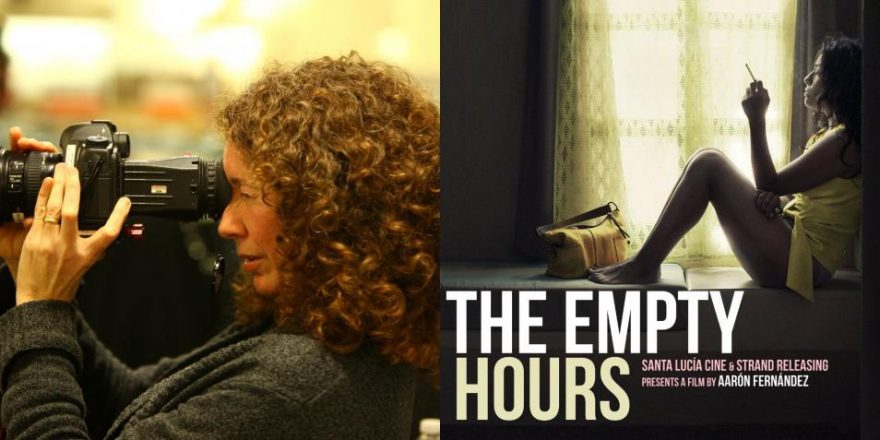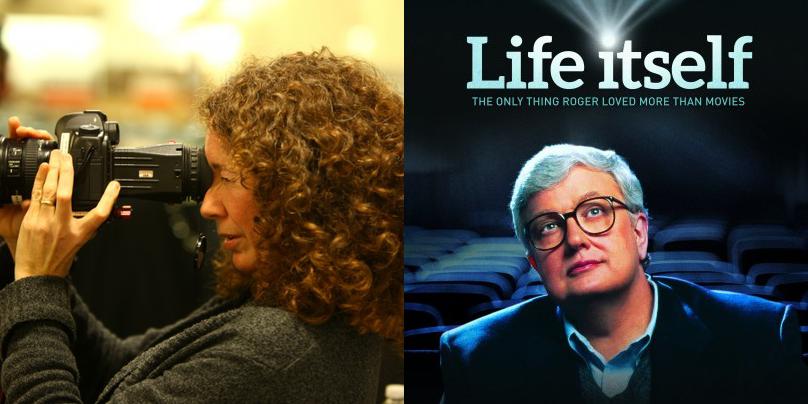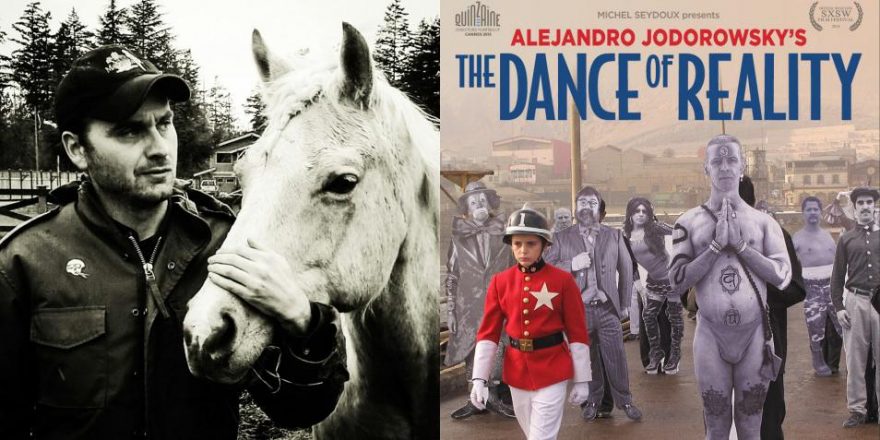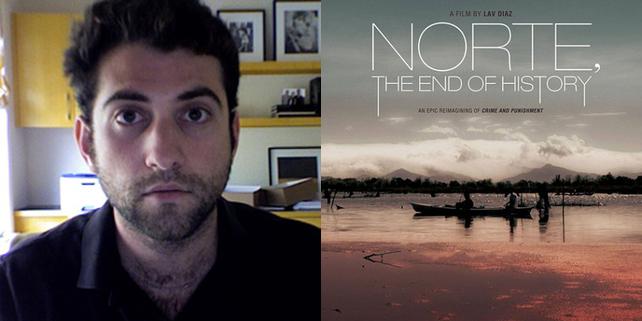In the Mexican independent production The Empty Hours, 17-year-old Sebastián and twentysomething Miranda spend the better part of the film waiting for something to happen. It’s a credit to director Aarón Fernández and his cast, Kristyan Ferrer and Adriana Paz, that I discovered so much in their waiting.
The premise of the story is slight. Sebastián, hormonal and antsy, is asked to be a caretaker for a sleepy motel in a forgotten Veracruz town by the sea. As his uncle tells him before leaving him in charge, the most important thing to remember about his responsibilities is “to be discreet.” This is a motel where the carports by the rooms have curtains that can be drawn to hide the vehicles of its philandering couples. Sebastián spends his days pretending not to see the lovers that come and go, and cleaning up after them. Here, he meets an equally restless “older woman,” Miranda, who spends her workdays in an empty office, trying to sell “condos by the sea” to people who can’t afford them. She comes to Sebastián’s motel to meet her neglectful married lover and, one rainy afternoon, while waiting for her man to show up, they strike up a conversation.
Can you guess where this will go?
Probably.
But it is in the getting there that you experience the lives of these two people. And it turns out that these small moments are what the movie is all about.
Because Fernández’s plot is so spare, there is time to meander. In the slowed-down pace of the film, you’re invited to fall into the rhythm of the lives of the characters. You notice things you probably wouldn’t have seen if you were busy trying to figure out the normal plot issues of what is happening now and anticipating what is coming up next.
You have the privilege, instead, of being a voyeur in the characters’ private moments. The camera lingers on Miranda the first time she pulls up in front of her workplace. In a faster paced film, you’d see her arrive – perhaps to make a point of the junky car, the dreary building she has to work in, and then the filmmaker would cut to her in the office – eager to jump to the next story point. But Fernández stays with her in the first shot, so you get to watch her get out of her car, you notice her shapely body, hips swaying as she walks away to unlock the gate. A reverse shot has her walking towards camera, revealing a pair of dressy wedge sandals she carries in hand. Then the camera swings around and you watch as she kicks off her cheap, dusty red sneakers before she enters the office. While you don’t see it, you know the sexy shoes will be put on next.
In a plot-driven movie, you would not have the time to watch the whole process of Sebastián cleaning up the motel rooms. You’d miss the detail of his earbuds buffering him from the uncomfortable task at hand. You couldn’t see his body language telling us he’s grossed out, as he moves with increasing discomfort to clean up after his clients’ illicit affairs; yanking off sheets, picking up tissues, rumpled towels, a used condom. You notice this like you notice the Caribbean blue walls and how Sebastián’s T-shirt and jeans and blue rubber gloves make him practically disappear into his surroundings.
Even in the aftermath of the inevitable sexual collision between the two, you witness as Sebastián, once again, waits – this time for Miranda to arrive. Not sure that she will, he lies on the tile floor of the motel office and notices a large ant as it makes its way across the floor. He lazily puts a bottle cap on the ant and watches it continue on its path, blinded but determined to keep moving.
It’s hard to put words to the feelings that these movies give you. Some patience is required of them but you’re rewarded with an experience that is as close as you’ll get to living your life as another person – cinematically speaking.
I’ve watched, and loved, slow-paced films from the time I was a kid, maybe because my family was large and noisy and overly dramatic with older teenaged siblings. These quiet movies gave me time to react to things. And they left their mark on me. The first feature script I wrote with my husband Richard Guay, called True Love, was universally rejected by every studio, every production company, and every agency we submitted it to. The reason they all gave us was that “nothing happens.”
The aim of our script was to chronicle the last few weeks before the big Italian-American wedding of a young couple who may or may not be right for each other. And yes, technically, there was not much plot to speak of. I was interested in the conversation and – more importantly – the behavior of this couple, their friends, and their family. Actually, I was more than interested – I was pretty much obsessed by this behavior. I wanted to see the things I’d observed in real life on a big screen. And I dearly hoped that an audience would share my fascination. Unfortunately, mood and behavior does not translate well to the page and so all our potential financiers could see was that “nothing happens.”
But the obsession was strong enough to fuel me for the six years it took to find the funding. When we were finally able to raise private money to shoot the movie, my cast and crew and I worked to deliver a story that came with some discoveries but still left some mysteries and still relied heavily on behavior. Just as it had been in the script, the finished film did not have much of a plot. To my great relief, once the story went from script to screen, people understood what I was trying to do and the lack of plot did not hurt their experience in watching the film.
Now, I still enjoy a good edge-of-your-seat, plot-twisty story like anyone else. But sometimes, I want to be immersed in a slow-moving film like The Empty Hours. Maybe it’s because, while I’m waiting for something to happen, I can witness a life.






